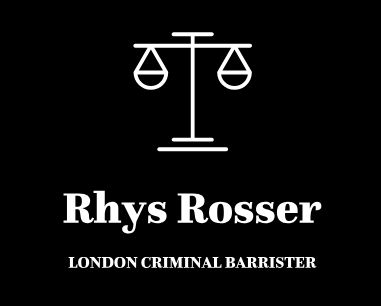Application to Dismiss
An Application to Dismiss (Dismissal) is made where there is insufficient evidence to prosecute the Defendant such that no jury could convict.
The power/duty to dismiss arises under s.52(6) Crime and Disorder Act 1998 which applies Sch 3 stating that upon notice of an application to dismiss having been given, “the judge shall dismiss a charge…if it appears to him that the evidence against the applicant would not be sufficient for him to be properly convicted”.
The Test
The test to be applied on dismissal is similar to although not identical to the test to be applied on a submission at the conclusion of the prosecution case. The difference arises only because at dismissal no evidence has been relied upon at the dismissal stage. As the evidence in the instant case is agreed the difference is of no consequence. The law is set out in R v Galbraith (1981) 73 Cr. App. R. 124 (extract below).
“How then should the judge approach a submission of “no case”? (1) If there is no evidence that the crime alleged has been committed by the defendant, there is no difficulty. The judge will of course stop the case. (2) The difficulty arises where there is some evidence but it is of a tenuous character, for example because of inherent weakness or vagueness or because it is inconsistent with other evidence. (a) Where the judge comes to the conclusion that the prosecution evidence, taken at its highest, is such that a jury properly directed could not properly convict upon it, it is his duty, upon a submission being made, to stop the case. (b) Where however the prosecution evidence is such that its strength or weakness depends on the view to be taken of a witness's reliability, or other matters which are generally speaking within the province of the jury and where on one possible view of the facts there is evidence upon which a jury could properly come to the conclusion that the defendant is guilty, then the judge should allow the matter to be tried by the jury. It follows that we think the second of the two schools of thought is to be preferred.”
In short, the test is whether or not there is any evidence on which a conviction can be taken or whether or not the evidence, taken at its highest, is such that no properly directed Jury could properly convict.
When reaching a decision, the Learned Judge would need to consider the whole evidence against the Defendant, none of the evidence should be viewed in isolation (R (Inland Revenue Commissioners) v Kingston CC [2001] 4 All ER 721).
Procedure
A Defendant who wishes to make an application to dismiss must give notice of such an application in writing. The rules for providing such a notice are set out in Criminal Procedure Rules 9.16, the application must be made in writing and not less than 28 days after the service of the prosecution evidence. The application must also be made prior to arraignment (where someone is asked if they are Guilty or Not Guilty).
There are a number of matters which the Application must take into account, these are set out below:
- explain why the prosecution evidence would not be sufficient for the defendant to be properly convicted;
- ask for a hearing, if the defendant wants one, and explain why it is needed;
- identify any witness whom the defendant wants to call to give evidence in person, with an indication of what evidence the witness can give;
- identify any material already served that the defendant thinks the court will need to determine the application, and
- include any material not already served on which the defendant relies.
The Prosecution will then have 14 days within which to respond to the application and provide submissions and observations. The Court can determine an application to dismiss with or without a hearing.
If the Application is successful the only way in which it could be challenged is by the preferment of a voluntary bill of indictment.
It would not be possible for the Defence to challenge the decision as it is a matter relating to trial on indictment. As set out at Section 29 (3) of the Senior Courts Act, these decisions cannot be challenged by way of Judicial Review or appeal to the Court of Appeal.
